How to Read Granulometric Curves of a Coffee Grinder
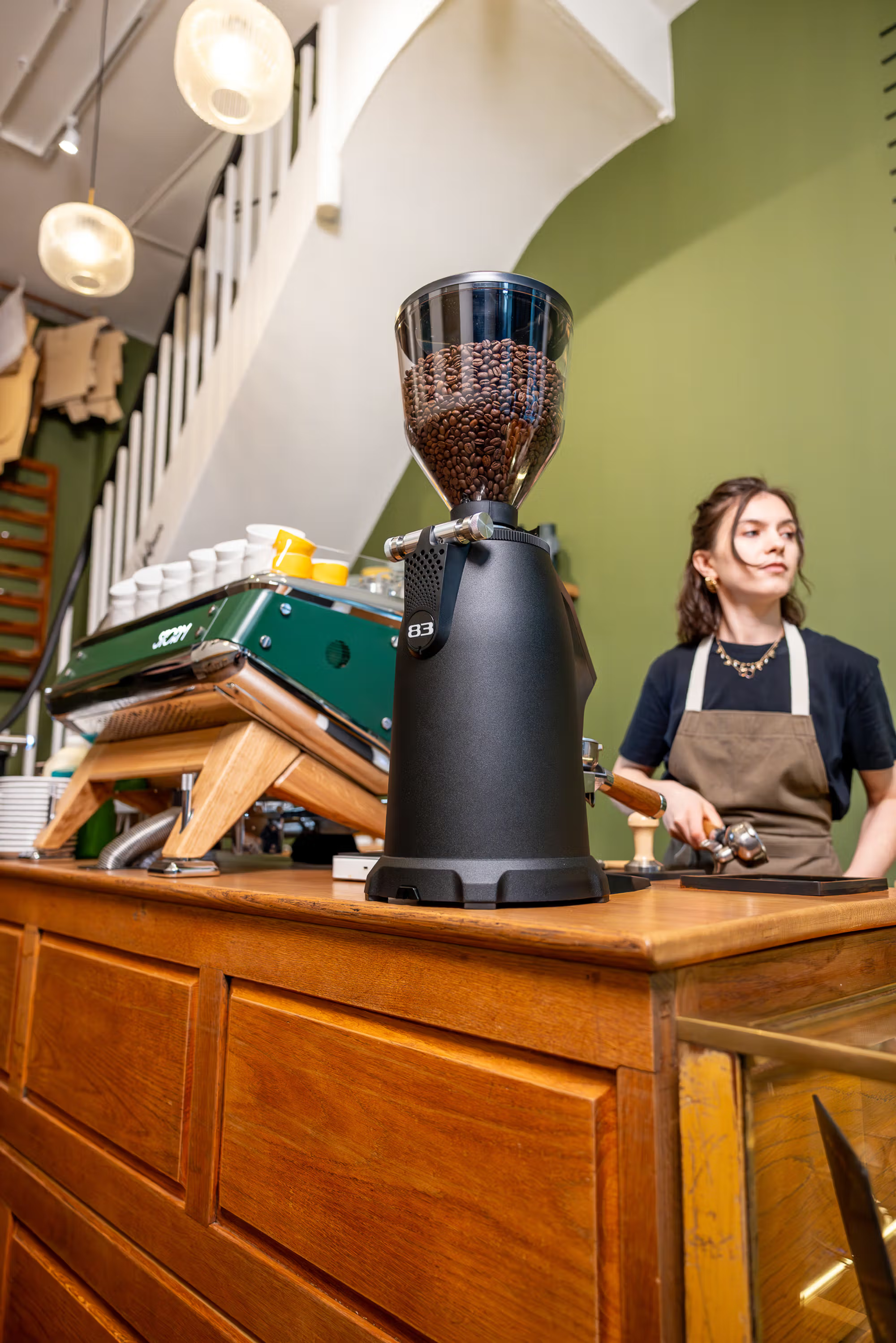
Author:
Giulia
Posted:
01/03/2024
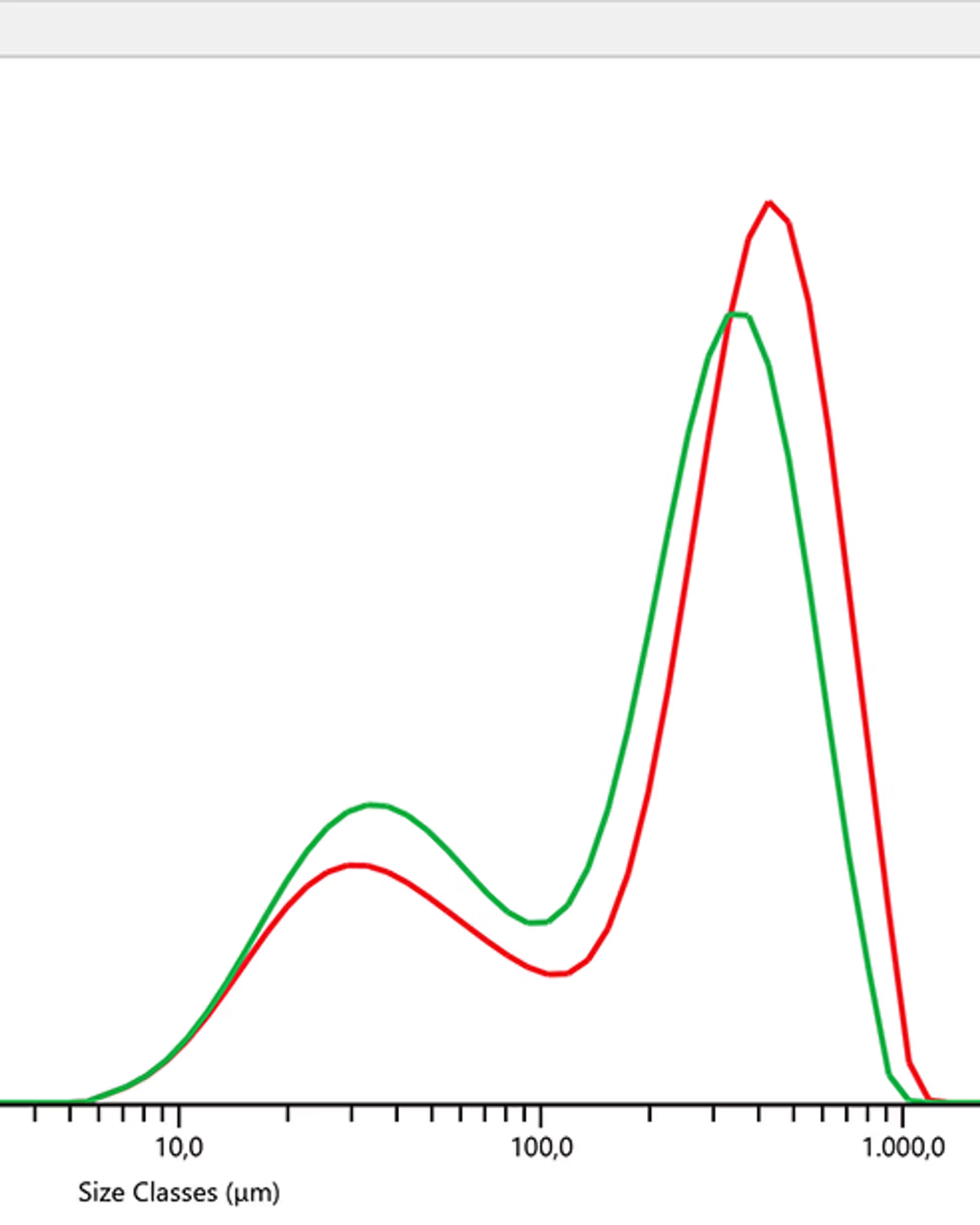
Granulometric curves might look intimidating at first – full of peaks, percentages, and microns – but they’re one of the most powerful tools for understanding how a grinder performs. In this guide, we’ll break down what these curves mean, why they matter, and how you can interpret them to get the most from your grinder.
We’ll also look at real examples from the Macap Supra 83, comparing results with a 100% Arabica coffee and a 70/30 blend, to see how different beans can affect distribution.
What is a Granulometric Curve?
A granulometric curve is simply a graph of particle size distribution. It shows how ground coffee is spread across different particle sizes.
- X-axis (horizontal): Particle size in micrometers (µm). Smaller numbers = finer particles, larger numbers = coarser particles.
- Y-axis (vertical): Volume percentage (%). This tells you how much of the coffee (by volume) falls into each particle size category.
The shape of the curve gives us insights into consistency, fines content and the overall grind quality.
Key Metrics to Look At
When reading a granulometric report, a few terms always come up:
- Mode (µm): The most common particle size – shown at the peak of the curve.
- D[4,3] (µm): The “volume-weighted mean,” or the average particle size by volume.
- % Below 200 µm (fines): The percentage of ultra-fine particles, which strongly affect flow and extraction.
Comparing the Supra 83 Results
Both tests below were run on the Supra 83, but with different coffees. They highlight how the same grinder can behave slightly differently depending on the beans used.
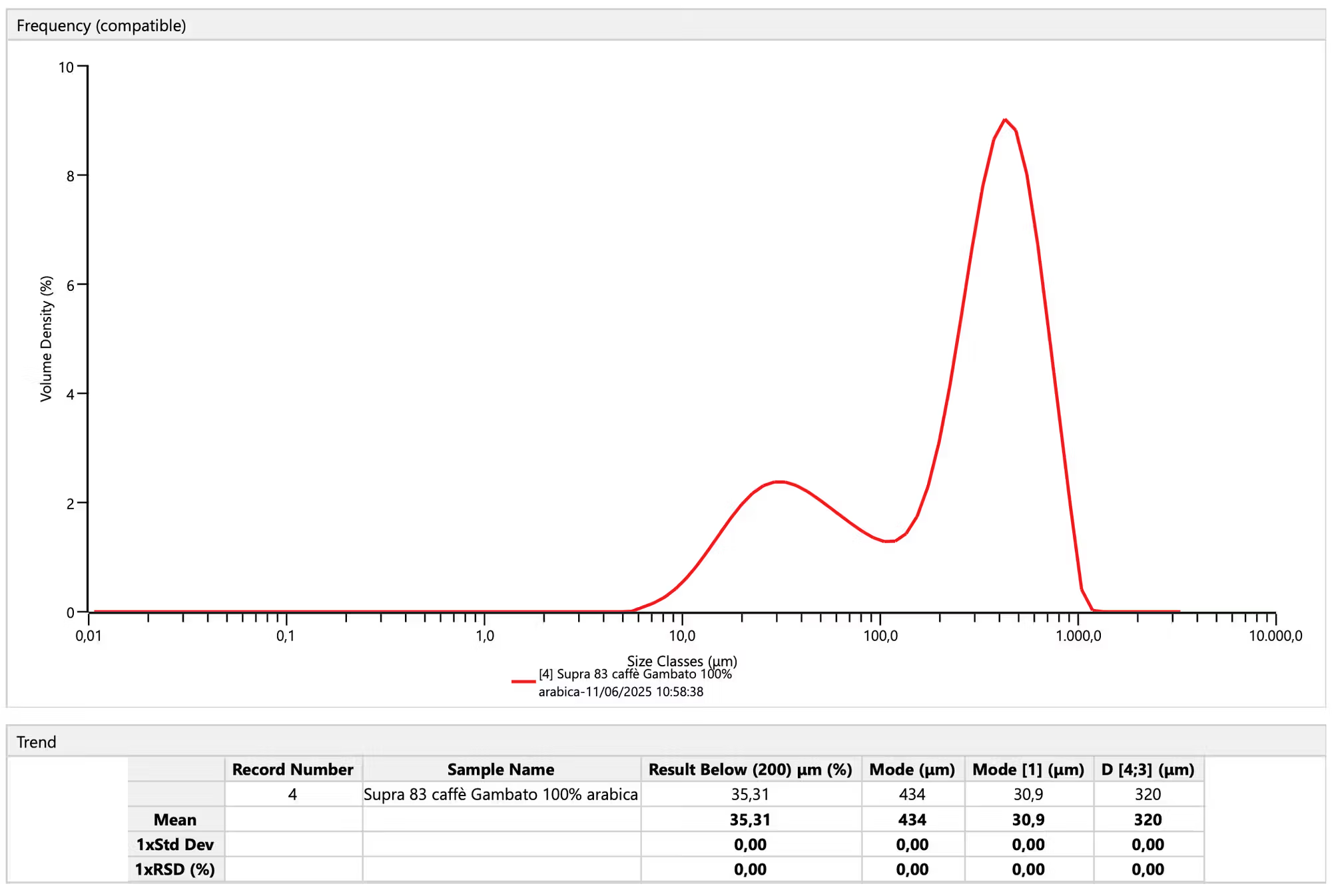 Supra 83 – 100% Arabica
Supra 83 – 100% Arabica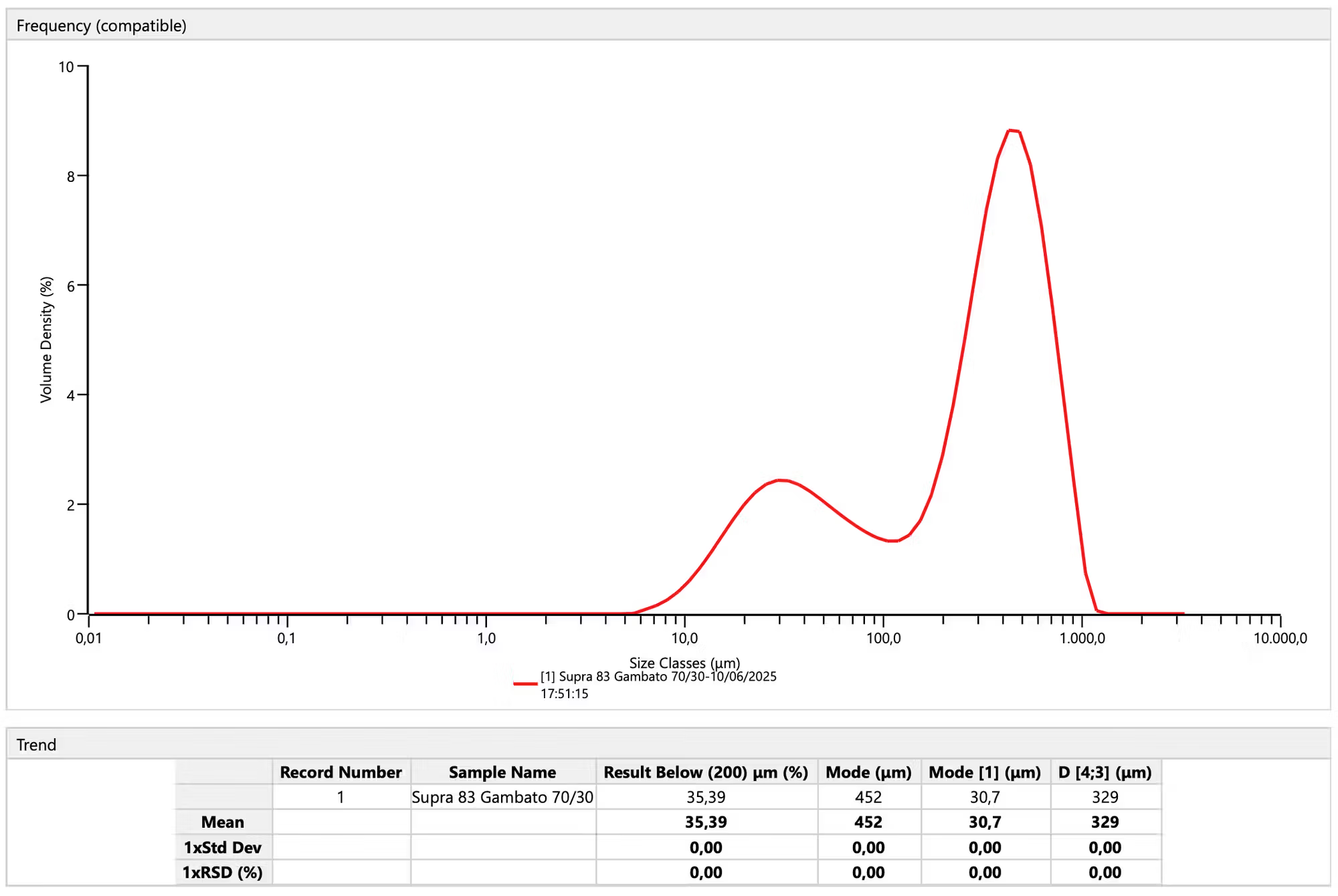 Supra 83 – 70/30 Blend
Supra 83 – 70/30 BlendSupra 83 – 100% Arabica
- Mode: 434 µm
- Mean (D[4,3]): 320 µm
- Fines (<200 µm): 35.3%
This distribution shows a clean, central peak with a modest proportion of fines. It suggests an espresso-friendly grind with balance between body and clarity.
Supra 83 – 70/30 Blend
- Mode: 452 µm
- Mean (D[4,3]): 329 µm
- Fines (<200 µm): 35.4%
Here we see a slightly coarser mode and mean, with almost identical fines. This produces a grind with excellent consistency — a great match for blends where body and flow control are important.
The key point: Both Supra 83 results show strong uniformity, low fines compared to many grinders and a distribution shape that supports efficient, repeatable extraction.
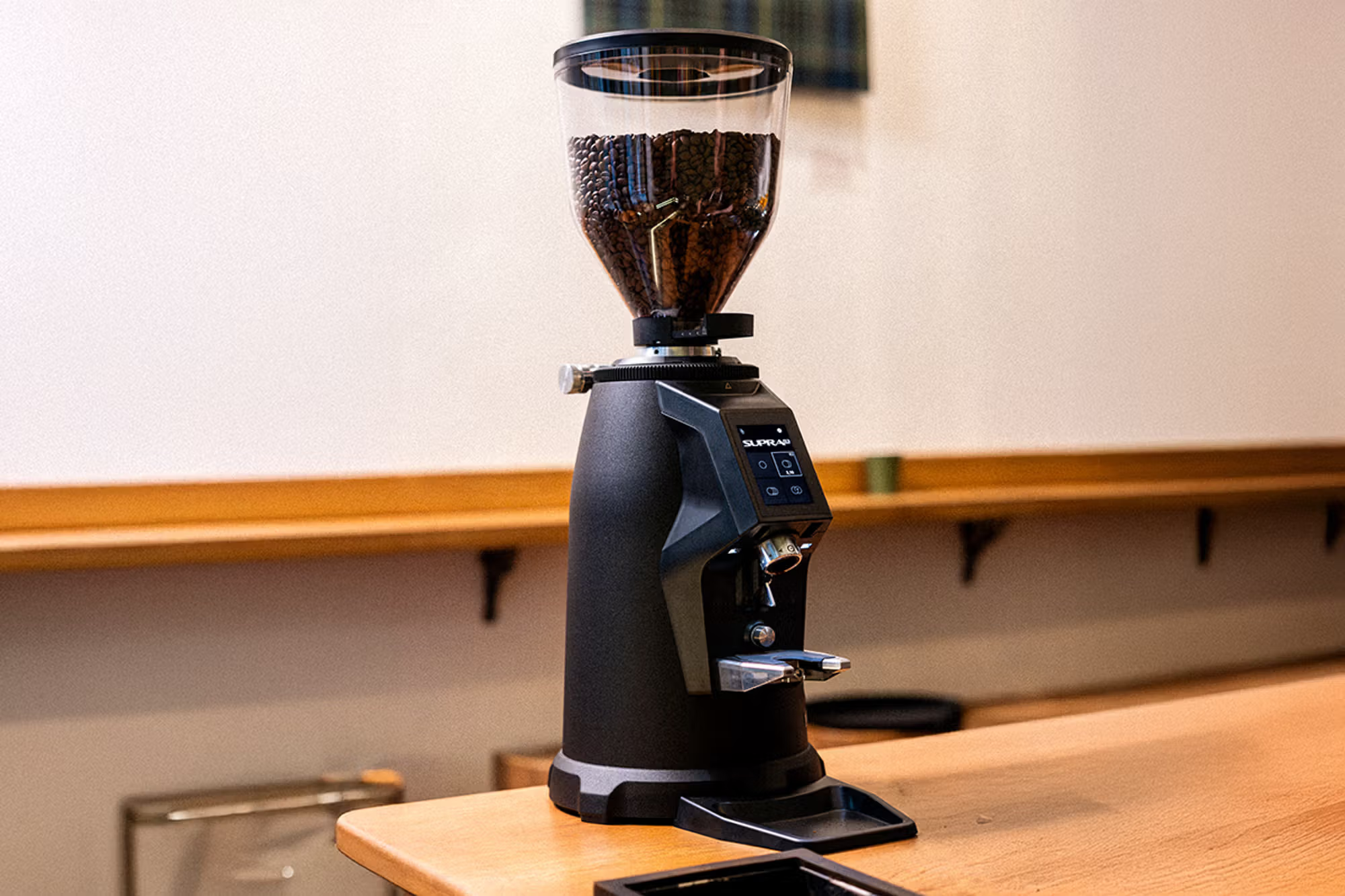
INTRODUCING SUPRA 83
When speed and volume are everything, the Supra 83 delivers. Equipped with larger 83mm burrs and a powerful 750W motor, it’s built for ultra-high volume settings where reliability, low retention, and consistent output are non-negotiable.
DISCOVER SUPRA 83Why It Matters for Coffee
• Narrow peaks mean consistent grind sizes, which lead to stable extractions. • High fines (<200 µm) can create body and crema, but too many may clog or cause over-extraction. • Wide spreads (boulders + fines together) can result in uneven brews.
How to Interpret a Curve at a Glance
- Look at the peak – is it sharp or broad? Sharper means more consistent.
- Check the fines percentage – <200 µm tells you how much “dust” you’re dealing with.
- Compare mode and mean – if they’re close, the grind is evenly distributed. If they’re far apart, there may be too many boulders or fines pulling the average.
FAQs
What’s a “good” fines percentage?
For espresso, anything around 30–40% <200 µm is fairly typical. Lower fines mean cleaner extractions, but some fines are necessary for body and crema.
Why does the curve look different with different coffees?
Roast level, bean density and blend composition all affect how beans fracture during grinding. A darker roast may create more fines, while dense arabicas often give tighter curves.
Do bigger burrs always mean better curves?
Larger burrs generally create more uniform distributions, but burr geometry, alignment and motor speed also matter.
Can I use granulometric curves at home?
The equipment is usually lab-based, but the principles help you understand why your grinder behaves as it does – especially when switching coffees or burr sets.